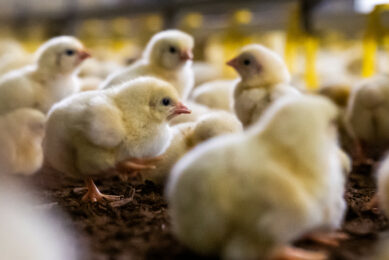Antibiotic resistance in animals increases

The use of antibiotics in animals and antibiotic resistance in bacteria in animals is still increasing. The antibiotic use on veterinarian prescription in food-producing animals in the Netherlands in the last decade nearly doubled.
This is concluded by researchers in the report ‘Monitoring of Antimicrobial Resistance and Antibiotic Usage in Animals in the Netherlands’ (Maran 2007).
The research was done under the direction of Prof.. Mevius of the Central Veterinary Institute (CVI).
Likely reasons for this increase are the prohibition on the use of antibiotics as growth promoter and the growth of farming enterprises.
The quality of feed is also under pressure from high prices of commodities on the world market and the ban on animal protein in feed.
This can increase the digestibility of feed in the gut, which is compensated by the use of antibiotics.
Usage and resistance is increasing
The continuous increase of use of antibiotics is all the more striking because there is currently an intense debate about the negative effects and health risks of antibiotic use in livestock production.
At the same time resistance levels increase, both for individual antibiotics and multi-antibiotic resistance.
ESBLs
In addition to the frequent occurrence of MRSA, a bacterium that is resistant to multiple types of antibiotics, especially the rapid increase of Extended Spectrum Beta-lactamase-producing bacteria (ESBLs), especially in poultry and poultry meat, are reason for concern.
In humans, an increase of ESBL is seen for example in urinary tract infections, but also in the hospital.
These ESBL are insensitive to important antibiotics, which makes decreases the probability of good recovery.
This increase is well observed in the gut flora of chickens, in Salmonella from chickens and to a lesser extent in Salmonella in humans.
Food also plays a role
In comparison with the animal-related MRSA there is a difference in the risk of acquiring ESBL’s.
MRSA is mainly transmitted to humans via direct contact, while for ESBLs the food chain probably plays a role in the spread: the genes are on mobile genetic elements that are transferable within and between bacterial species.
Projects that the genetic relatedness of ESBL from animal and human studies have been started.
The full report Monitoring of Antimicrobial Resistance and Antibiotic Usage in Animals in the Netherlands in 2006/2007 can be downloaded from web site of CVI.











